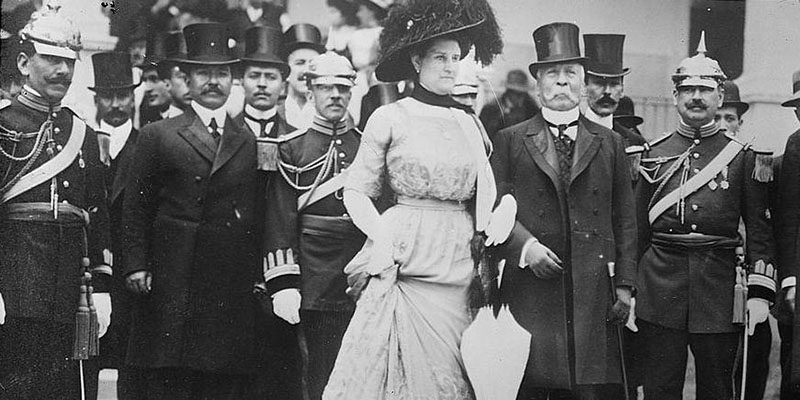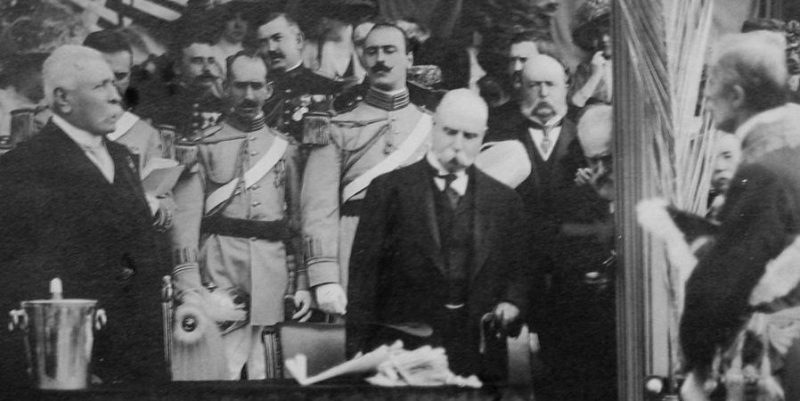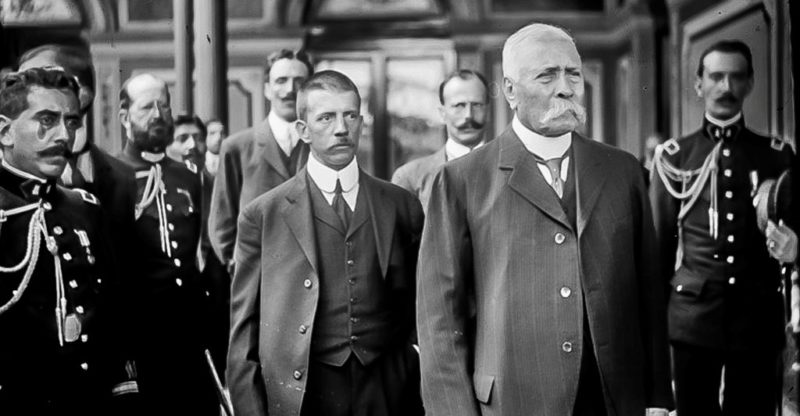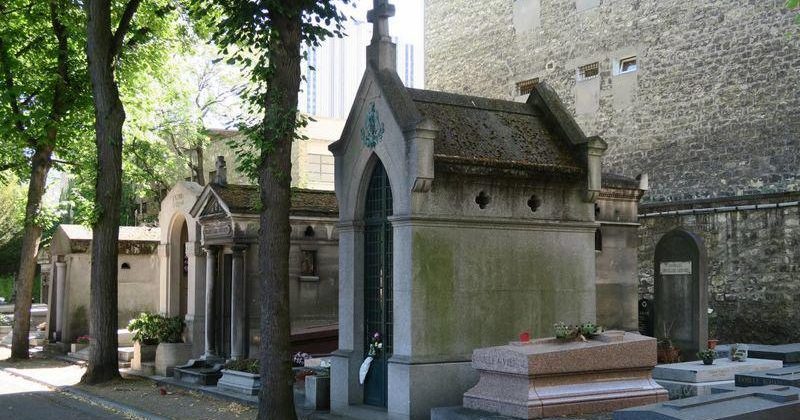We explain who Porfirio Díaz was, what his personal life and studies were like. In addition, his characteristics and political and military career.
Who was Porfirio Díaz?
José de la Cruz Porfirio Díaz Mori (1830-1915), better known as Porfirio Díaz, was a Mexican military man who served as president of the Mexican Republic seven times. He ruled the country for thirty years, the last seventeen consecutively.
His military career was brilliant during the Second French Intervention in Mexico, an armed conflict between Mexico and the European nation that lasted from 1862 to 1867.
It is known that he fought in the Battle of Puebla, the Siege of Puebla, the Battle of Miahuatlán, and the Battle of Carbonera. In addition, he organized guerrillas against the invading French in the state of Oaxaca. He was a national hero.
However, the last term of Porfirio Díaz was resisted by numerous detractors, among whom was Francisco I. Madero, his main political adversary. The fall of his authoritarian government, known as “el porfiriato”, set the stage for the Mexican Revolution.
Where was Porfirio Díaz born?
Porfirio Díaz was born in Oaxaca, the former province of Antequera , on September 15, 1830.
He was the sixth of seven siblings , children of José Faustino Díaz Orozco and María Petrona Cecilia Mori Cortés.
He grew up in a wealthy family that had declined after the death of his father, a victim of cholera, in 1833.
Porfirio Díaz’s Education

Díaz began his studies at the Tridentine Seminary of Oaxaca , sponsored by José Agustín Domínguez y Díaz, who later became Bishop of Antequera.
He stayed there until 1846 when he decided to retire and enroll in the Oaxaca Institute of Arts and Sciences. This was due to the influence of the then governor of Oaxaca, Benito Juárez.
At the end of 1850, he was already a teacher of that institution, and a couple of years later he studied law there under the tutelage of Juárez himself.
Porfirio Díaz’s military career
Díaz’s military career began with the Ayutla Revolution against Santa Anna in 1853. In addition to the liberal cause, he was part of the guerrillas that resisted the federal government in 1855. His participation in this fight earned him a gunshot wound and a subsequent post in the mandate of Ignacio Comonfort.
Again he fought on the liberal side in the War of the Reform (1958-1961) and quickly rose to the positions of major, colonel, and lieutenant general. He was also a candidate for federal deputy.
The Second French Intervention in Mexico called him back to the battlefield. He commanded 30,000 soldiers from Juarez to take Oaxaca as interim governor and resist the French with guerilla warfare tactics.
When the Second Mexican Empire was proclaimed by the invaders, Díaz was forced to surrender and sentenced to life imprisonment in Puebla. After escaping from prison, he managed to gather new troops and fight the conservatives and the French, commanding the capture of Puebla when the French troops had already withdrawn from the country. His side was victorious, Juárez rewarded him with lands and military honors.
Love life and children of Porfirio Díaz

Díaz had recognized love affairs during the war with Juana Catalina Romero and with soldier Rafaela Quiñones, with whom he had a daughter, Amanda Díaz.
However, his first marriage was in 1867, with his own niece, Delfina Ortega de Díaz. He had the permission of President Juárez to dispense the blood relationship.
With her, he had the first child in 1869 and two years later twins, but all died shortly after birth. The exception was the fourth descendant, born in 1873, Porfirio Díaz Ortega. Their only daughter, born in 1875 and named Luz Victoria, also died 48 hours after she was born.
Díaz was widowed in 1880, and in November 1881 he has married again, to Carmen Romero Rubio, from a very wealthy family, with whom he had no offspring.
Porfirio Díaz’s first presidential term
He ran as a presidential candidate in the 1867 elections, competing against Juárez himself, but was defeated. Díaz returned to present his candidacy in 1871 , competing again with Juárez and Sebastián Lerdo de Tejada.
This new loss to Juárez was not very well received this time, and both Díaz and Lerdo contested the elections. Thus began a new civil war, known as the La Noria Revolution. Its name is due to the hacienda with which Juárez himself had rewarded Díaz for his heroism.
The Revolution culminated when Juárez died in Mexico City, and Lerdo was proclaimed president, first on an interim basis and then after winning the 1872 elections.
The Nerdist government quickly proved unpopular, and although the figure of Díaz in those days was politically very decayed, it was enough for Lerdo to announce his desire for reelection at the end of 1875 to unleash a new civil war: the Tuxpec Revolution.
That conflict culminated in the resignation of Lerdo and the holding of new elections in 1877, in which Díaz was finally elected for the first time.
The Porfiriato

With Diaz’s first term in office, the Porfiriato begins, in which Mexico was under his direct command. The exception was the period 1880-1884, when Manuel González Flores, Díaz’s former Minister of War and one of his most loyal men, ruled.
From December 1, 1884, after being re-elected, Díaz ruled without interruption until 1911.
The precepts of the Porfiriato were peace, order, and progress. It was a regime of national development, which had the support of the United States of America and was philosophically guided by positivism and the writings of Auguste Comte.
This long period of political stability allowed the development of sciences and arts, as well as the imposition of education compulsory, secular, and free. However, the unequal school distribution between rural and urban areas sowed the inequality that later gave birth to the Revolutionaries of the 20th century.
Another important aspect of the Porfiriato was the expansion of the railway network throughout the country. As part of a modernization project, it left more than 20,000 kilometers of lines and even planned one that would connect Mexico with the United States.
This was possible thanks to the numerous foreign investments that felt confident to exploit Mexican natural resources in an environment of stability and tight political control.
Political characteristics of your government

The Díaz government had the following political features:
- Conciliation with the Catholic Church. Given the tense relations between the clergy and previous liberal governments, Díaz fostered some reconciliation, allowing the return of the Jesuits and the proliferation of religious orders. Díaz went so far as to confess himself “Catholic, Apostolic, and Roman”, but this did not mean that he allowed the political influence of the Church to grow in his government.
- Gentle international relations. With both the United States and Europe, Díaz fostered stable commercial and diplomatic relations. He paid the foreign debt to Great Britain in 1884, restored Mexican credit in the world, thus reducing dependence on the United States. He also signed the Herrera-Mariscal Treaty in 1882 that brought peace with Guatemala.
- Control of the press and repression. A “Gag Law” was published in 1882 that allowed the government to censor print media and prosecute journalists. In addition, any type of peasant rebellions, protests, or uprisings was violently repressed. To do this, he resorted to secret policemen known as “The rural ones.” Opposition journalists and politicians were often exiled or imprisoned.
Resignation and exile of Porfirio Díaz

Over time his ” necessary dictatorship “, backed by progress and modernization, turned him into a tyrant.
The insurrections against him were called by Francisco I. Madero, but they were also caused by the economic crisis. This was due in part to the drop in the price of silver and soon generated discontent.
In 1910 a new civil war broke out, which Díaz could not face given his physical condition and advanced age. Finally, in 1911, he was forced to resign.
Díaz died in exile in Paris in 1915. He was eighty-four years old. At that time, Mexico was engulfed in the internal wars of the Mexican Revolution.
Memories of Porfirio Díaz

Porfirio Díaz wrote his memoirs, recounting his entire life from his birth until July 1867. Also, reserve the first chapter for your ancestors.
They include thirteen years of his military adventures, reaching the moment when he was about to be a candidate for the presidential elections of his country, for the first time.
Famous quotes by Porfirio Díaz
- “Poor of our Mexico, so far from God and so close to the United States.”
- “Dog with bone in mouth, neither bites nor barks.”
- “I can separate myself from the presidency of Mexico without regret or regret, but I will not be able, as long as I live, to stop serving this country”
- “Bread and stick”.
The above content published at Collaborative Research Group is for informational and educational purposes only and has been developed by referring to reliable sources and recommendations from technology experts. We do not have any contact with official entities nor do we intend to replace the information that they emit.














